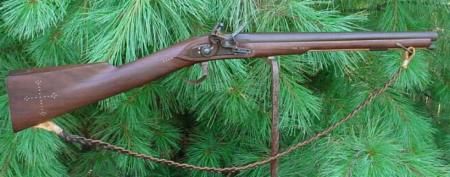I have a couple of modern barrels here that are take-offs from cartridge guns. One is an older 20ga Remington 870 barrel (no rib), and the other is from a 16ga pump action (again, no rib). Both have excellent bores and finish, and each was found for less than 30 dollars apiece.
A good friend here locally can easily breech these for me, along with carefuly removing the mounting "ring" that secures the barrels to the tube magazine of the original host gun. In fact, he suggested cutting the "ring" down and leaving a small nub as an underlug on the barrel intended for a fowler. The other barrel will actually be shortened and used for a smoothbore pistola.
I am just curious if anyone else has ever done such a thing? These are a great source for nicely contoured barrels that are NOT of questionable origin or strength, albeit only in shorter lengths. If anything, I suspect such barrels to be a fair bit stronger than the typical leaded steel stock used by Getz, Colerain, etc, but for the intended use that is really neither here nor there.
A few years back one used to be able to purchase longer shotgun barrel blanks from either McGowan or E.R. Shaw, I cannot recall which, but checking both of their respective websites reveals no such product any longer. I truly need to cal both companies to inquire, as the prices were quite reasonable at the time. Too bad, as a good, inexpensive fowler barrel would be a hot seller amongst the smoothbore affecionados.
A good friend here locally can easily breech these for me, along with carefuly removing the mounting "ring" that secures the barrels to the tube magazine of the original host gun. In fact, he suggested cutting the "ring" down and leaving a small nub as an underlug on the barrel intended for a fowler. The other barrel will actually be shortened and used for a smoothbore pistola.
I am just curious if anyone else has ever done such a thing? These are a great source for nicely contoured barrels that are NOT of questionable origin or strength, albeit only in shorter lengths. If anything, I suspect such barrels to be a fair bit stronger than the typical leaded steel stock used by Getz, Colerain, etc, but for the intended use that is really neither here nor there.
A few years back one used to be able to purchase longer shotgun barrel blanks from either McGowan or E.R. Shaw, I cannot recall which, but checking both of their respective websites reveals no such product any longer. I truly need to cal both companies to inquire, as the prices were quite reasonable at the time. Too bad, as a good, inexpensive fowler barrel would be a hot seller amongst the smoothbore affecionados.







